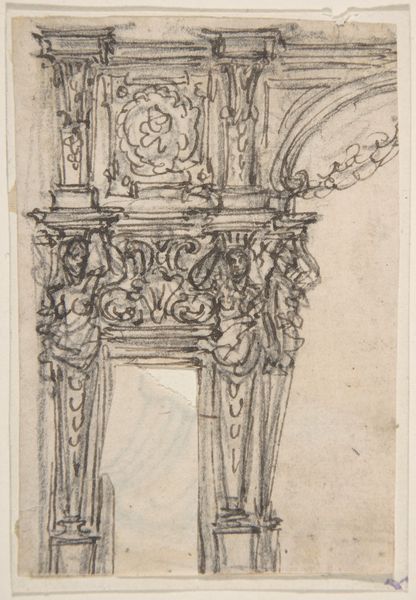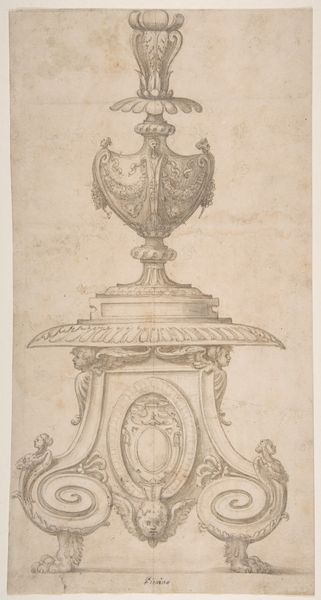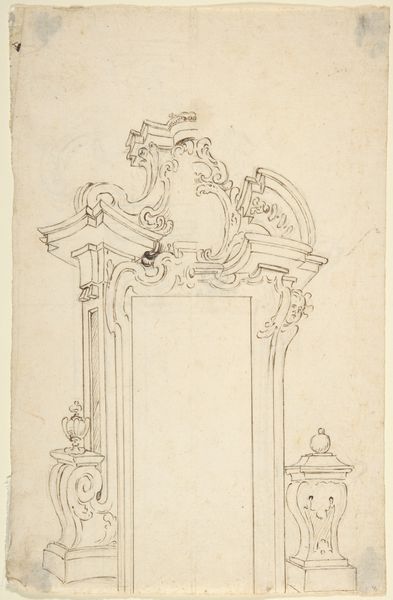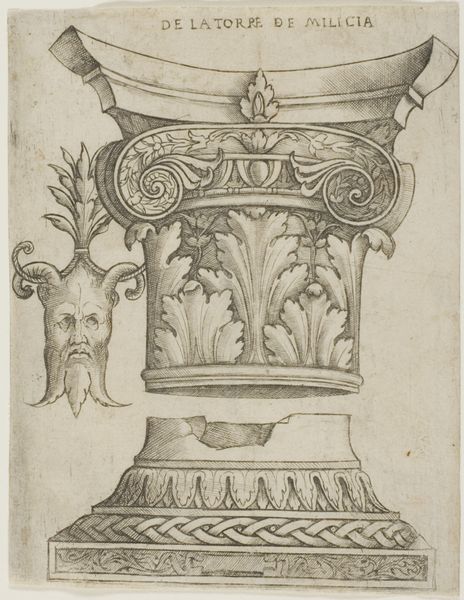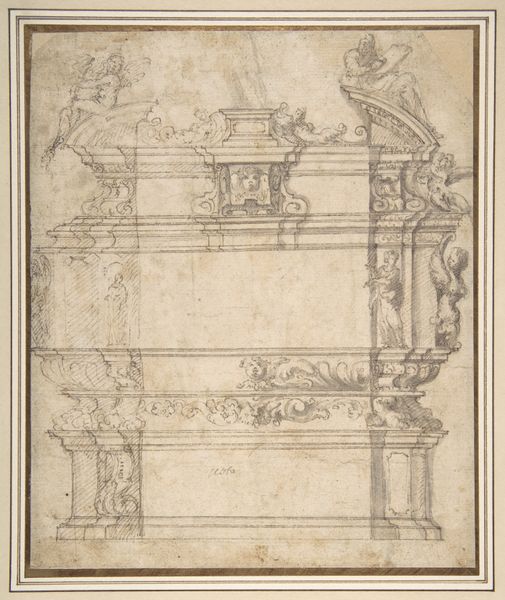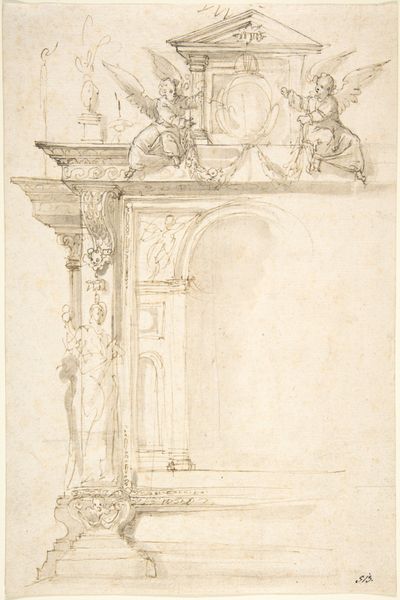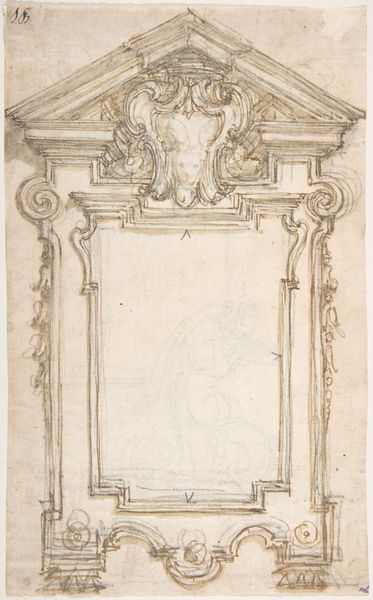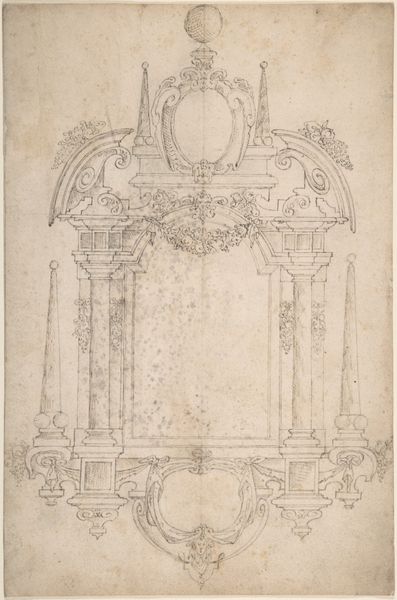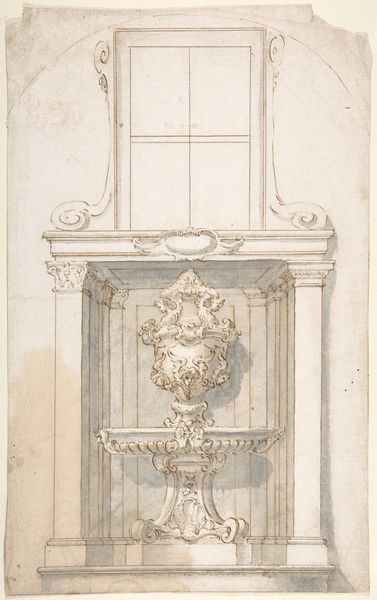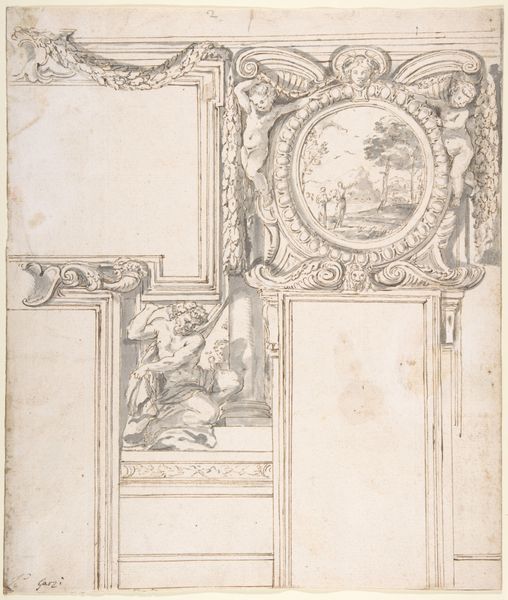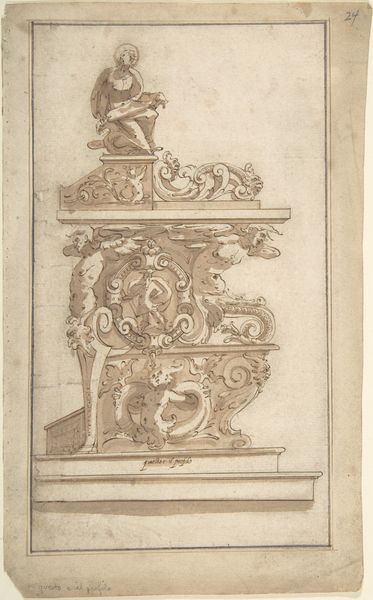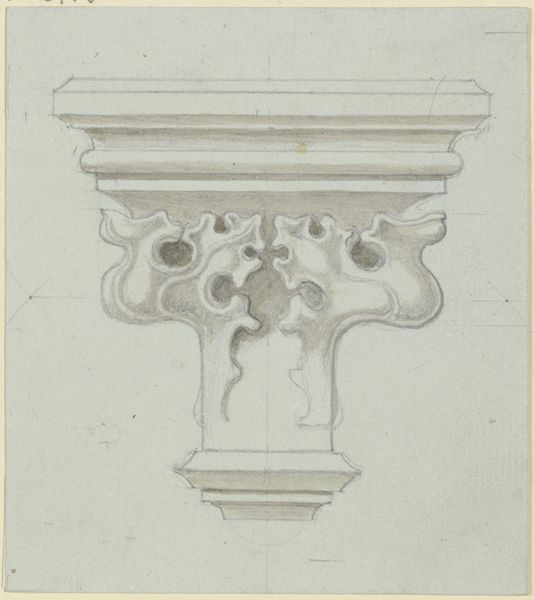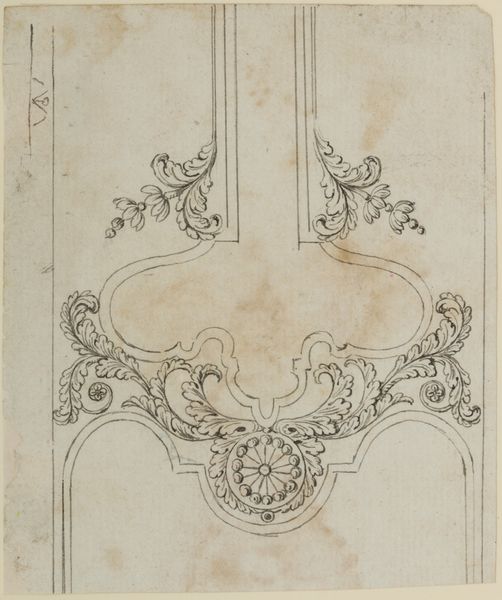
Design for a Lectern (recto); Design for a Cartouche (verso) . 1652 - 1725
drawing, print, pencil
drawing
pencil sketch
form
11_renaissance
geometric
pencil
Dimensions: sheet: 8 1/16 x 5 13/16 in. (20.4 x 14.7 cm)
Copyright: Public Domain
Curator: This drawing, a design study for a lectern, dates roughly from between 1652 and 1725, attributed to the Italian artist Giovanni Battista Foggini. It also features a design for a cartouche on its reverse. It's rendered in pencil, giving it a delicate feel. Editor: There's a ghostly quality about it. The wispy lines, the unfinished feel – it's like a dream of Baroque architecture, a structure almost too ornate to exist in the waking world. Curator: It captures a very specific moment in the artistic process. We're not seeing the finished article, but the artist wrestling with the possibilities, with form and function in equilibrium. Look at the proposed cartouche, so elegantly positioned on the other side; everything interlinks and corresponds to something beyond itself. Editor: And those curlicues and flourishes – they remind me of handwriting, a kind of visual calligraphy. It’s almost as though Foggini is not just designing an object, but imbuing it with a narrative, an essence that extends beyond the purely functional. All of the ornamental shapes and figures evoke an uncanny symbolism: the more you try to understand their function, the less the object offers them up to view. Curator: Indeed, you touch upon an interesting thought here! The pencil sketch form allows us an uncommon closeness to the artist's state of mind at its inception, rather than its finished state as devotional accoutrement, to see how shapes are created as thought manifest themselves. Editor: It's also interesting to consider how Foggini, even in these early sketches, engages with themes of sacred space. This lectern is not just furniture, it's a platform for knowledge, for the transmission of sacred words. Its very design would have lent weight, importance, to the speaker and their message. In all their artistic expression, Italian designers were, in truth, subtly manipulating cultural perception through their creations. Curator: What resonates for me is how Foggini could imbue such a practical piece with a real sense of poetry, something that raises it beyond the everyday. It’s a testament to the transformative power of art. Editor: And for me, it's the constant conversation between absence and presence, the tension between what’s there and what is suggested. This gives a unique view to the artwork beyond merely its creator, a view into how cultures reflect their history via even the most humble-seeming items.
Comments
No comments
Be the first to comment and join the conversation on the ultimate creative platform.
